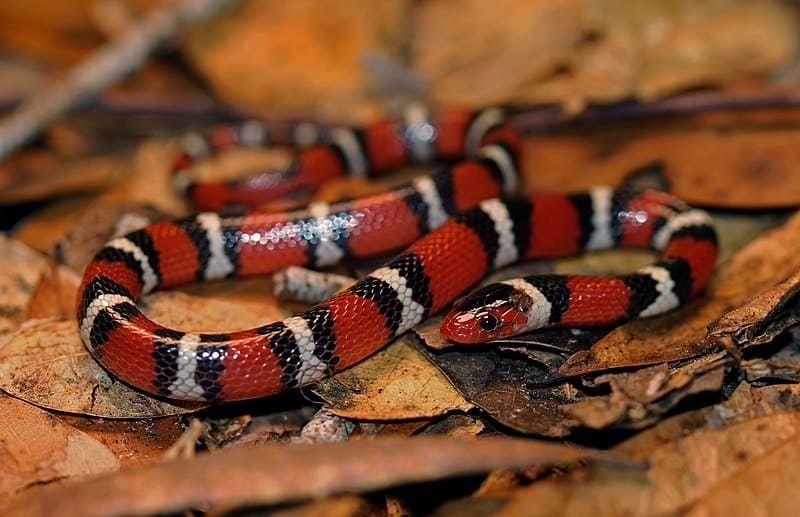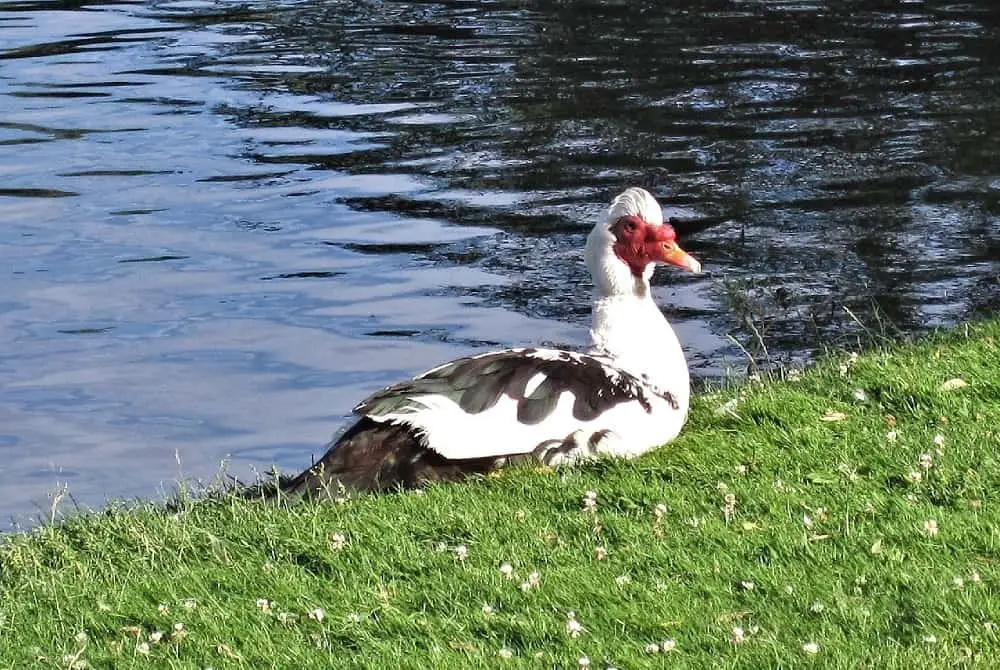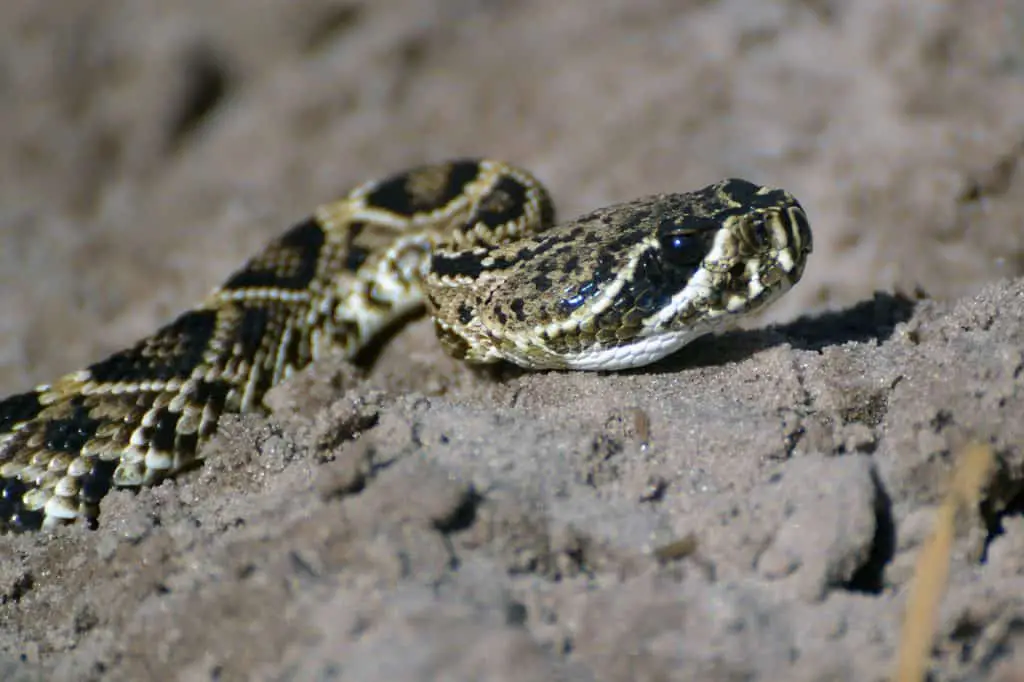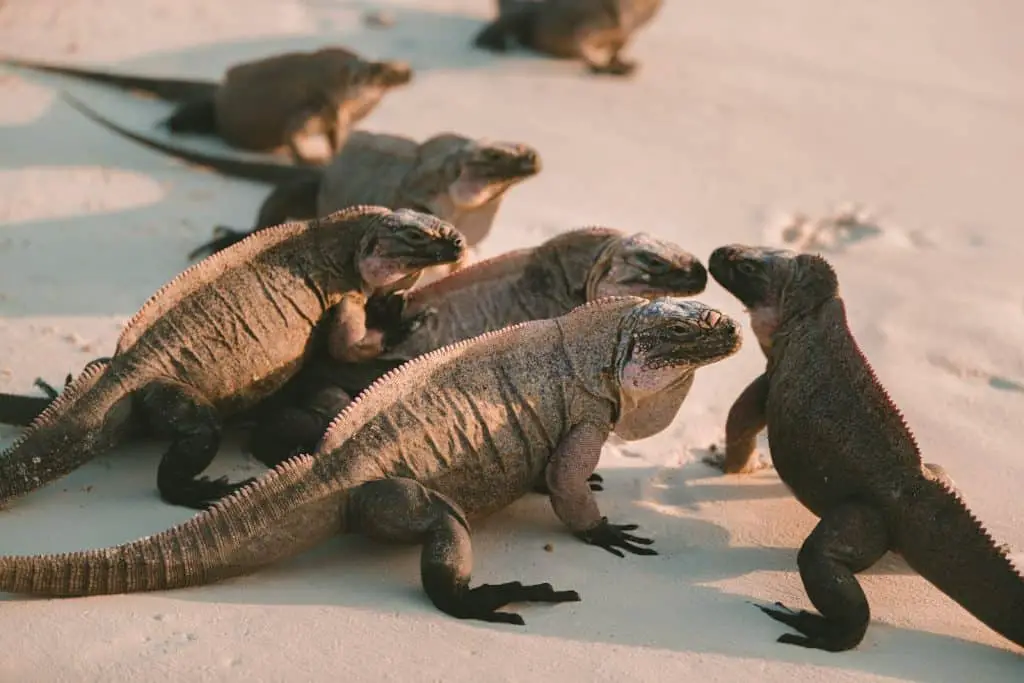Snakes, with their slithery movement and mysterious eyes, can be a source of fascination or fear. But when it comes to identifying which snakes are poisonous and which are not, there is an easy answer: a simple rhyme! It’ ‘s called the King Snake Coral Snake Rhyme!
Have you ever been in a situation where you’ve encountered a snake, but did not know if it was poisonous?
While it can be difficult to identify certain snakes, there is an old rhyme that has been passed down through generations that can help. In this article, we will discuss what rhyme is and how to use it to tell if a snake is poisonous.
This ancient rhyme has been used for hundreds of years and should be taken into account whenever one encounters a snake.
What is the rhyme to tell if a snake is poisonous?
There are many old wives’ tales and myths about how to identify poisonous snakes, but one of the most common is a rhyme that goes “Red touch yellow, kill a fellow; red touch black, venom lack.
This rhyme refers to the colors of certain snakes found in North America, specifically the Coral Snake and the harmless Scarlet Kingsnake. The Coral Snake is venomous and has bands of red, yellow, and black, while the Scarlet Kingsnake is harmless and has bands of red, black, and yellow.
The rhyme suggests that if a snake has red and yellow bands touching each other, it is venomous and should be avoided, while if a snake has red and black bands touching, it is harmless and can be approached safely.
While this rhyme may be catchy and easy to remember, it is not always reliable for identifying poisonous snakes. Not all venomous snakes have distinctive red, yellow, and black banding patterns, and some harmless snakes can have similar coloration.
It is important to note that attempting to identify a snake based on its coloration can be dangerous, as it may lead to misidentification and a false sense of security around venomous snakes.
It is always best to assume that any snake encountered in the wild is venomous and to exercise caution and respect.
Instead of relying on old wives’ tales, it is important to learn to identify the physical characteristics and behaviors of venomous snakes.
Venomous snakes in North America generally have triangular-shaped heads, slit-like pupils, and a heat-sensing pit located between the eye and nostril. They also have longer fangs than non-venomous snakes and may exhibit aggressive or defensive behaviors when threatened.
If you are unsure about the identity of a snake, it is best to give it a wide berth and avoid any attempts at handling or approaching it. Instead, call a professional wildlife expert or local animal control agency for assistance in safely removing the snake from your property.
Reptilian Rhymes: Exploring the Connection
The vast group of Elapid snakes known as coral snakes is further subdivided into the New Word Coral Snake and Old Word Coral Snake groups.
There are three recognized genera and more than 65 identified types of new world coral snakes (Leptomicrurus, Micrurus, and Micruroides).

There are 16 species in the three genera Calliophis, Hemibungarus, and Sinomicrurus that are found in the Old World. Genetic research reveals that Asian heritage can be traced all the way back to the family’s origins in the old world.
Red-eyed Kingsnake (Lampropeltis elapsoides) Non-venomous Red, black, and yellow (or white) rings run the length of the body on scarlet kingsnakes.
However, unlike in Harlequin Coral snakes, the narrow yellow rings only make contact with the black rings.
As in Harlequin Coral snakes, the rings completely encircle the body. Red is on their snouts.
Rhyme for Coral Snakes
This poem on snakes teaches you how to identify poisonous and dangerous snakes.
The poem about snakes aids in separating harmless snakes like the milk snake or the harmless scarlet king snake from deadly coral snakes.

Although it is not incorrect to assume that all snakes of a certain hue are deadly, this ambiguity has led to the killing of less dangerous snakes. Although the poem has undergone multiple revisions, the core theme has not changed.
Red Touched Yellow, Kills The Fellow
You may identify a coral snake in this way. The red bands are always surrounded by the thin yellow bands. Only the coral snake and its environment are mentioned in this poem.
There are numerous species of coral snakes. The colors are never comparable, and every coral snake is venomous. Leave the colorful snakes alone if you do come across any snakes in the bush.
Never poke someone with a stick to show off your bravery. The majority of snake bites happen as a result of stress. 
The poem’s depiction of the red-touching-yellow snake, which is a coral snake native to North America, can be seen in real life.
The milk snake and the scarlet king snake have color patterns similar to the coral snake’s, however, the coral snake differs in that it is venomous. Although the yellow and red stripes are touching, the yellow stripe is narrower.
On the deadly variant, the black stripes can touch the yellow stripes but not the red. A wild coral snake is extremely rare. They prefer to stay in their dens during the day and only forage at night and in the early morning.
These coral snakes bite their prey and fixate on them, unlike the other dangerous snakes.
White Touches Yellow
Is a snake deadly if white and yellow are in contact?
There are dozens of different snake species on earth, and there is a very good chance that you will run into a white and yellow deadly snake.
The poem about the North American snake has nothing to do with the white markings. Red touch Black, Safe for Jack, and Red touch Yellow, Kill a Fellow are the lines from the rhyme.
Only by rhyme can you identify a coral snake as one of the most dangerous snakes found in North America. You must firmly believe that the poetry about a snake is not universally relevant.
There are numerous coral snakes with various color patterns. Each and every coral snake has poison. No snake that resembles a snake in the poem, with yellow touching white, exists on the continent of North America.
The majority of snakes are transient guests who only remain for a few hours or days. It is absolutely not a good idea to kill the snake with a garden tool.
If you decide you want the snake removed from your property, you can either buy a trap or hire a specialist.
Red Touch Black, Safe For Jack.
The saying “Red Touch Black, Safe For Jack” is a variation of the popular rhyme used to identify the venomous Coral Snake from its non-venomous look-alike.
However, in some regions of the world, such as South America, there are different species of Coral Snakes with different color patterns. In these regions, the “Red Touch Yellow” rhyme may not be reliable, and other identification methods may be necessary.
It is important to note that the “Red Touch Black” variation of the rhyme is only applicable to certain species of snakes, such as the Scarlet Kingsnake and the Milk Snake, which have similar coloration to the venomous Coral Snake but are harmless.
In North America, the Coral Snake has bands of red, yellow, and black, with the red and yellow bands touching each other. In contrast, the Scarlet Kingsnake and the Milk Snake have bands of red, black, and yellow, with the red and black bands touching each other.
While the “Red Touch Black” variation of the rhyme may be helpful in identifying harmless snakes, it is important to remember that not all non-venomous snakes have the same coloration.
It is always best to exercise caution and respect around any snake encountered in the wild and to avoid attempts at handling or approaching it.
Despite being a dangerous snake found in North America, the coral snake is not considered to be a member of the pit viper family.
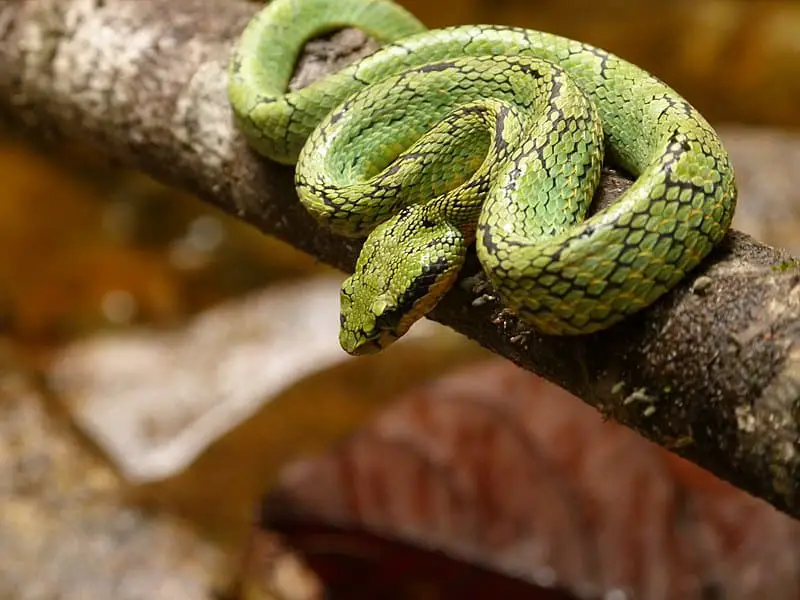
The Coral snake lacks slit-like pupils, heat-sensing pits, and a triangle-shaped head. It also lacks slit-like pupils.
The notion for writing a poem to distinguish the dangerous snake from its equivalent non-poisonous relatives came from the way we depict coral snakes, which are exactly the opposite of pit vipers.
The poem on coral snake accurately describes the potentially lethal poisonous snake found in North America. Red to black, Jack is safe (the snake is harmless). Red kills a person when it contacts yellow (the snake is poisonous).
The red stripes on the coral snake are close to the thin yellow stripes.
Since these snakes prefer to forage at night and in the early morning hours, coral snake sightings are uncommon. Even among themselves, they maintain their seclusion.
When they bite, coral snakes hold on to their victim and do not let them go. This reflects yet another difference between the coral snake and the pit viper.
Coral snakes never inject their venom; instead, they allow it to seep through the wound. The length of time the snake remains attached to the prey’s body determines how much venom enters the wound.
Another Version of the King Snake Coral Snake Rhyme
Red touch yellow—kill a man is a classic poem. The head is yellow, and the nose is black. The red king snake and the scarlet snake are two Florida species that resemble the coral snake.
The coral snake has red stripes that touch the yellow stripes and a black nose when you compare the three.
The scarlet king and snake have crimson noses, but the red bands do not touch the yellow bands. Some coral snakes have darker colors, making it impossible to see any red on them.
In addition to learning the rhymes and identification methods, it is essential to educate oneself about snake behavior and habitat. Venomous snakes are found in a variety of environments, from forests and swamps to deserts and grasslands, and understanding their habits and behaviors can help reduce the risk of negative interactions.
In conclusion, while the “red touch yellow, kill a fellow; red touch black, venom lack” King Snake Coral Snake rhyme may be catchy, it is not always reliable for identifying poisonous snakes.
It is important to learn to identify the physical characteristics and behaviors of venomous snakes and to exercise caution and respect around any snake encountered in the wild.

